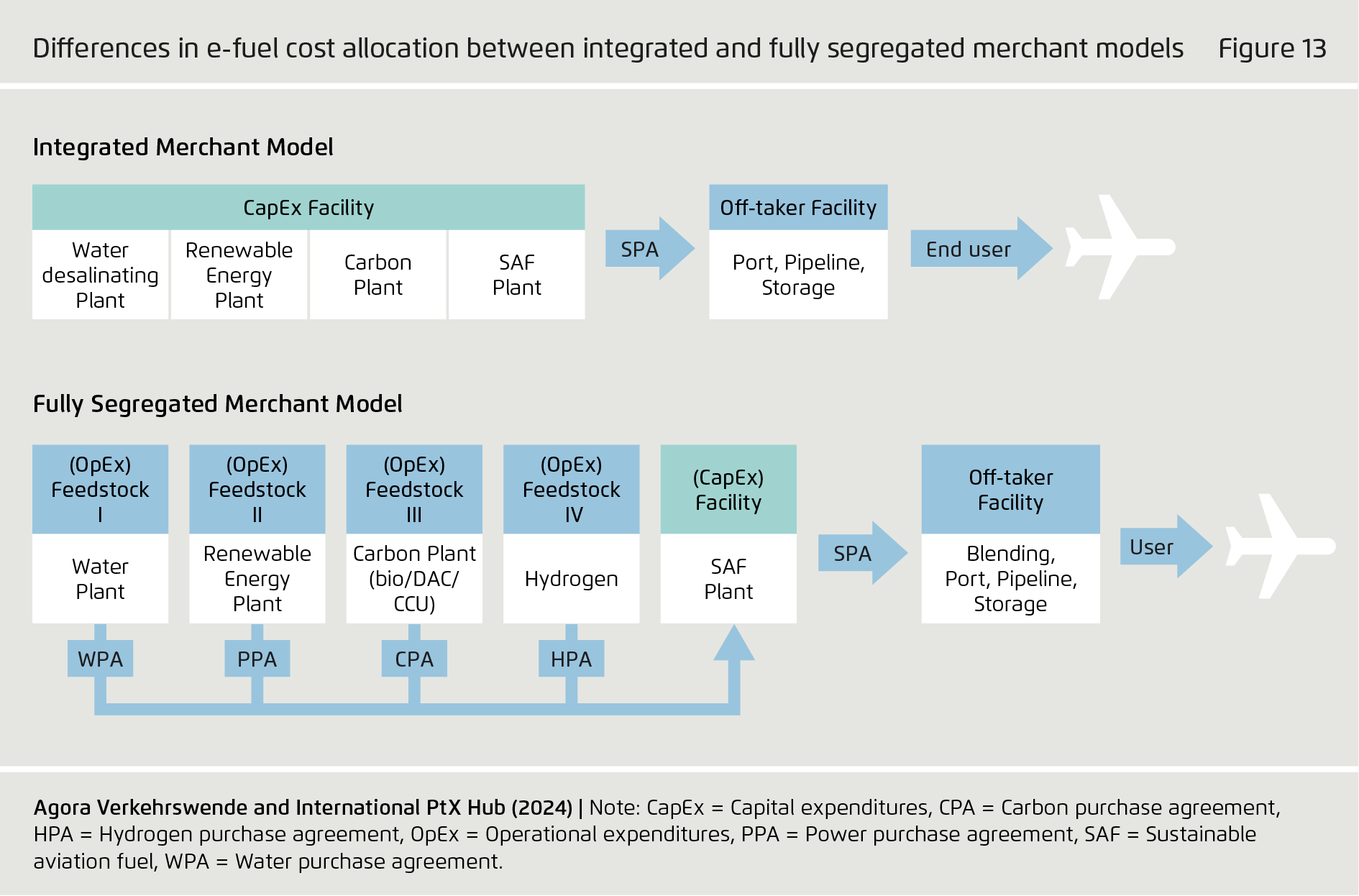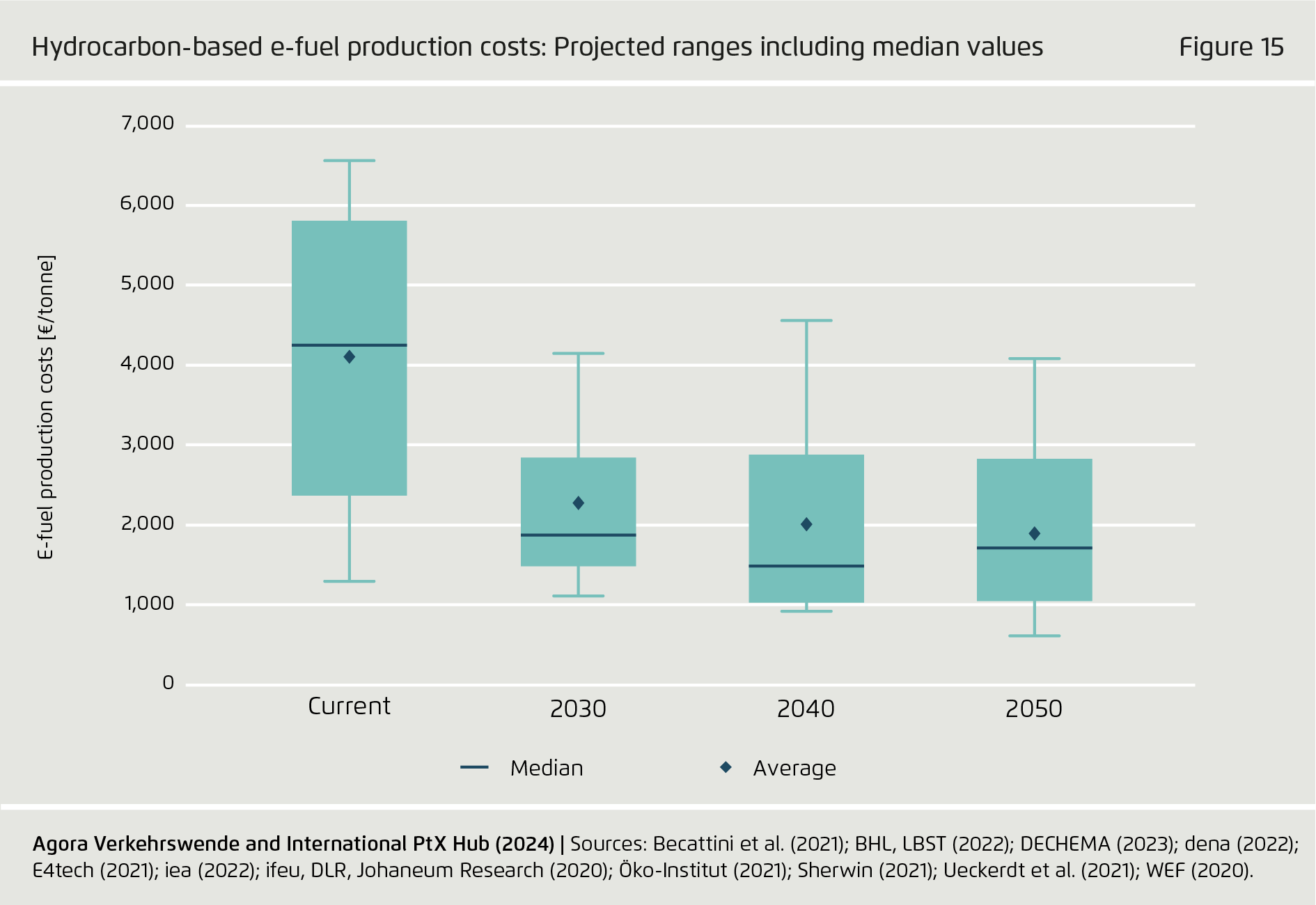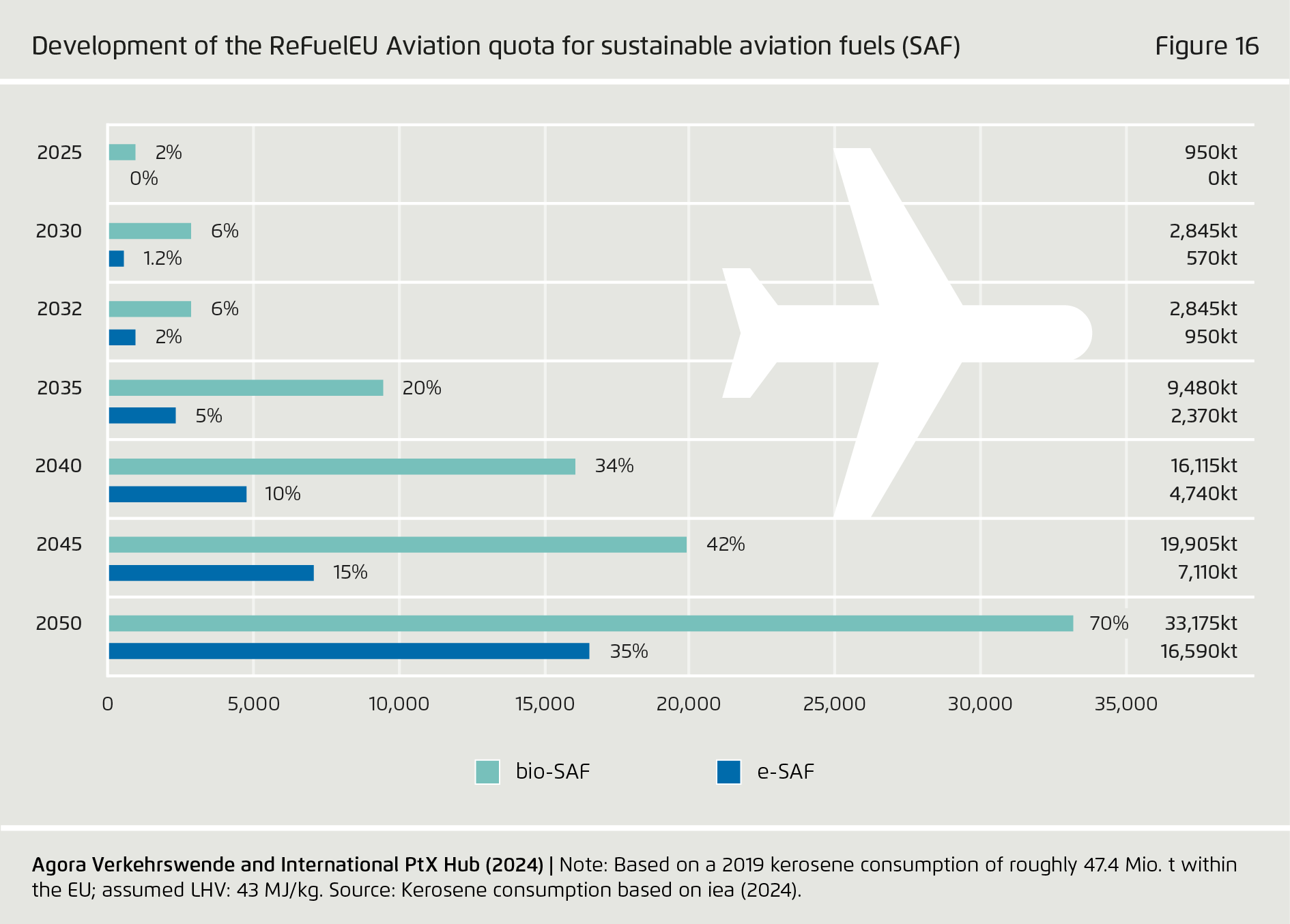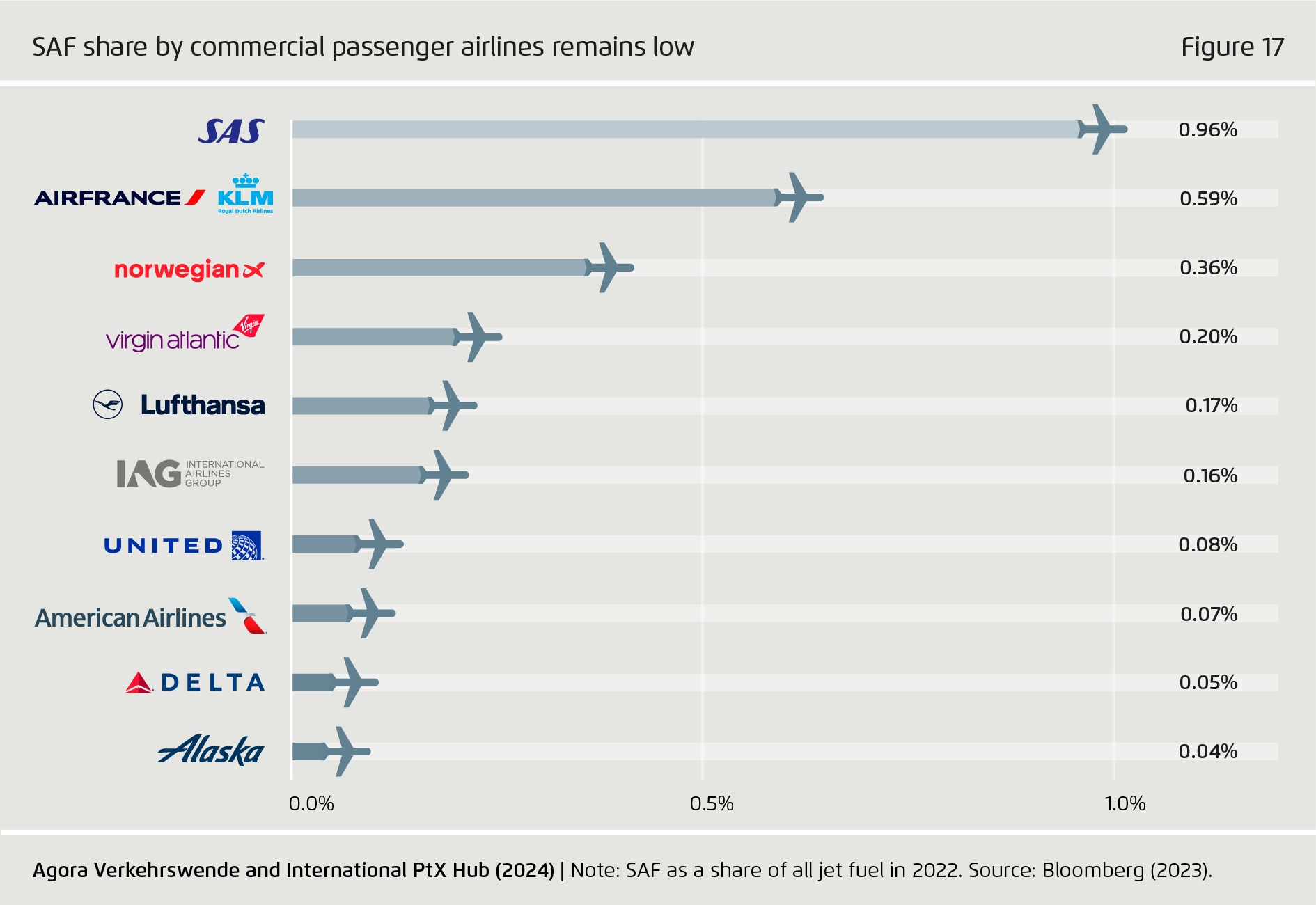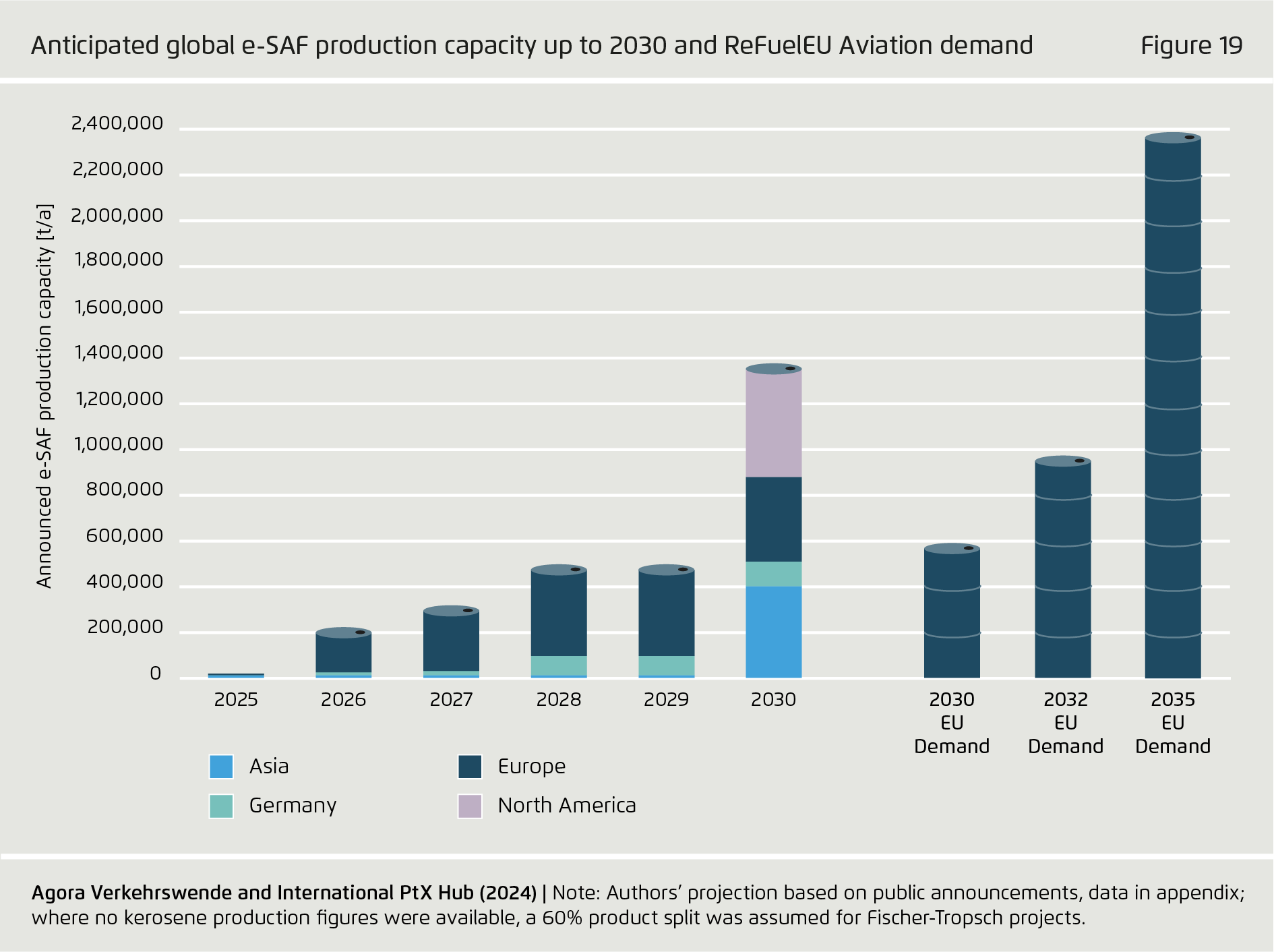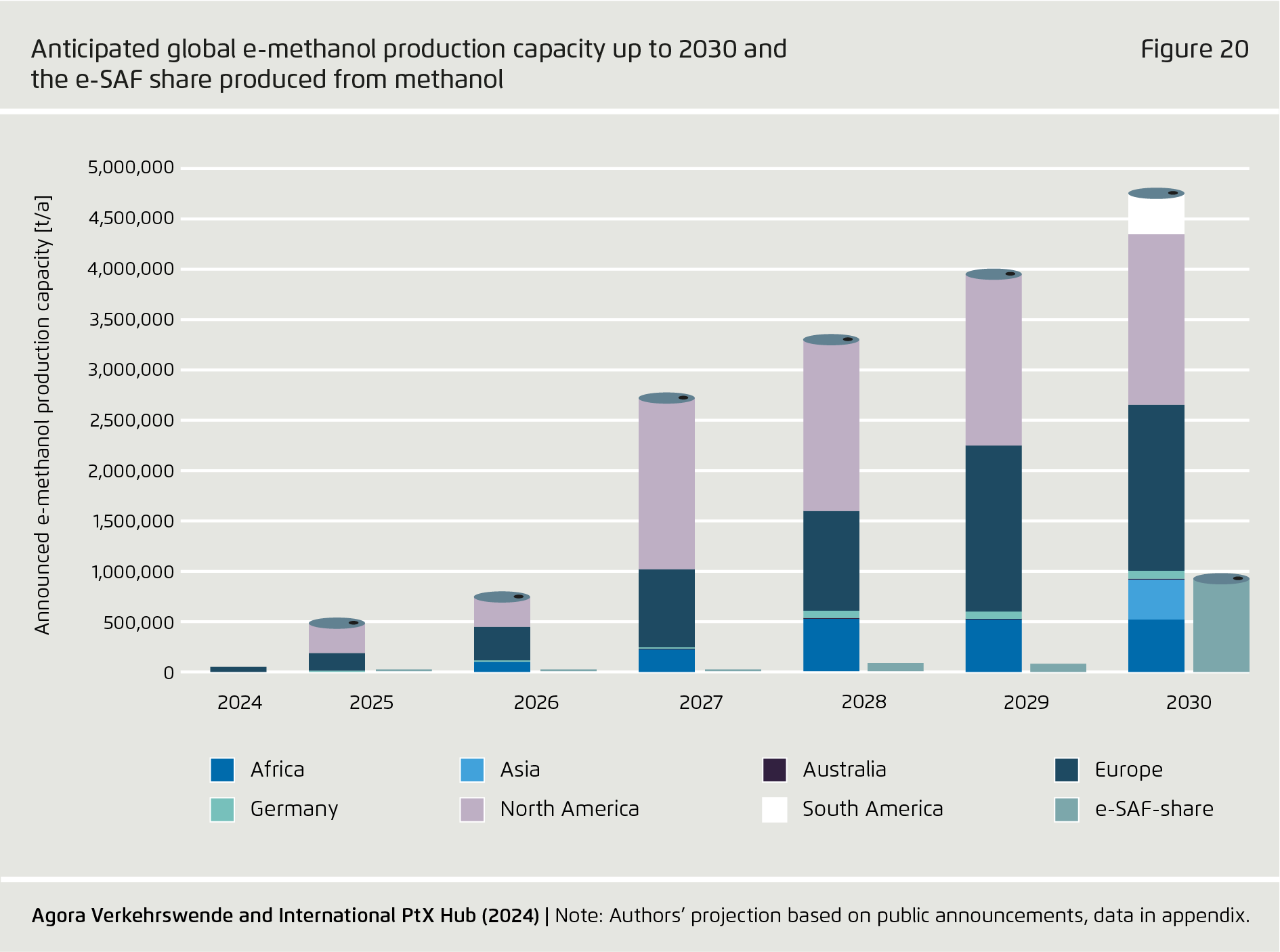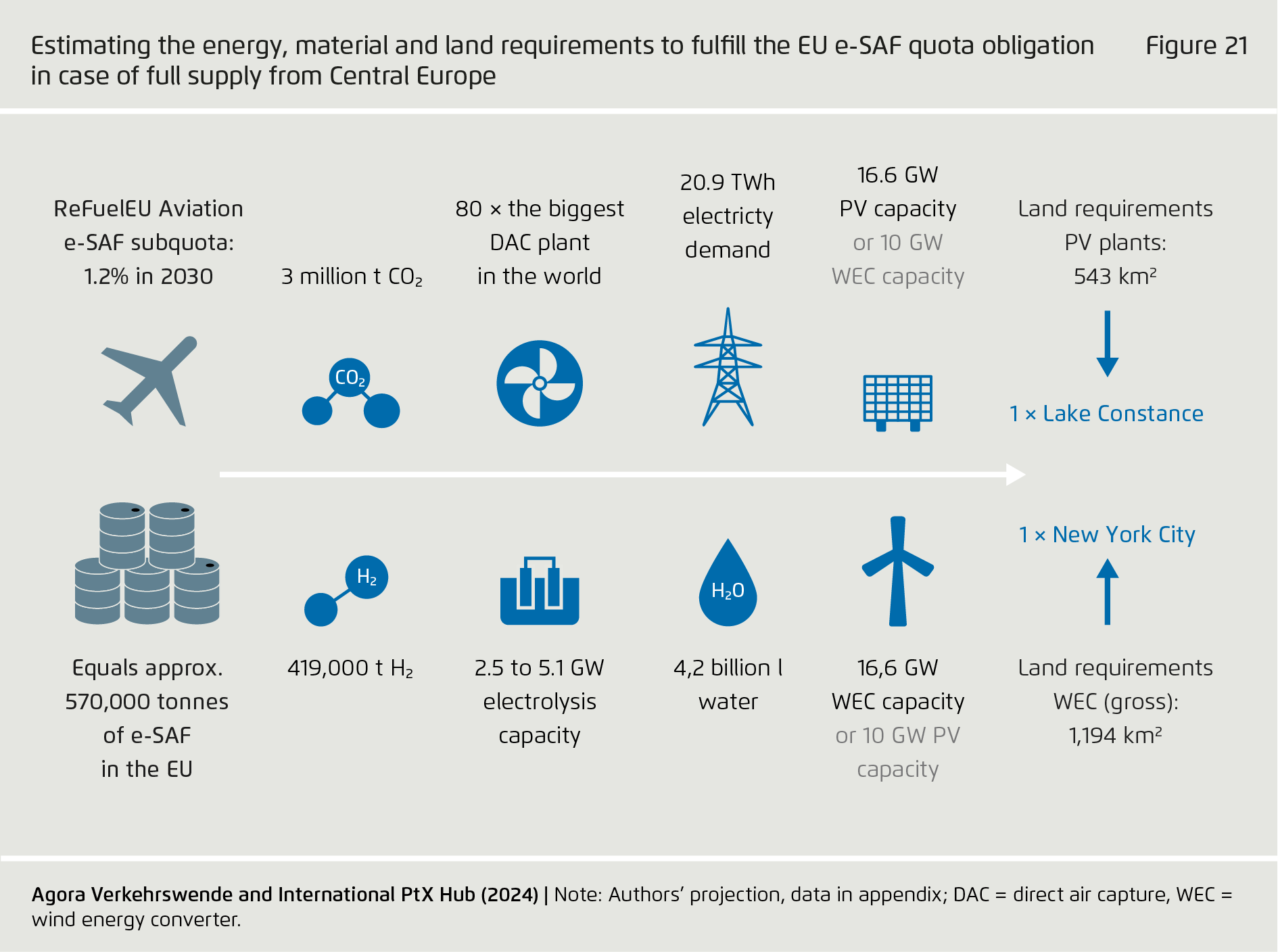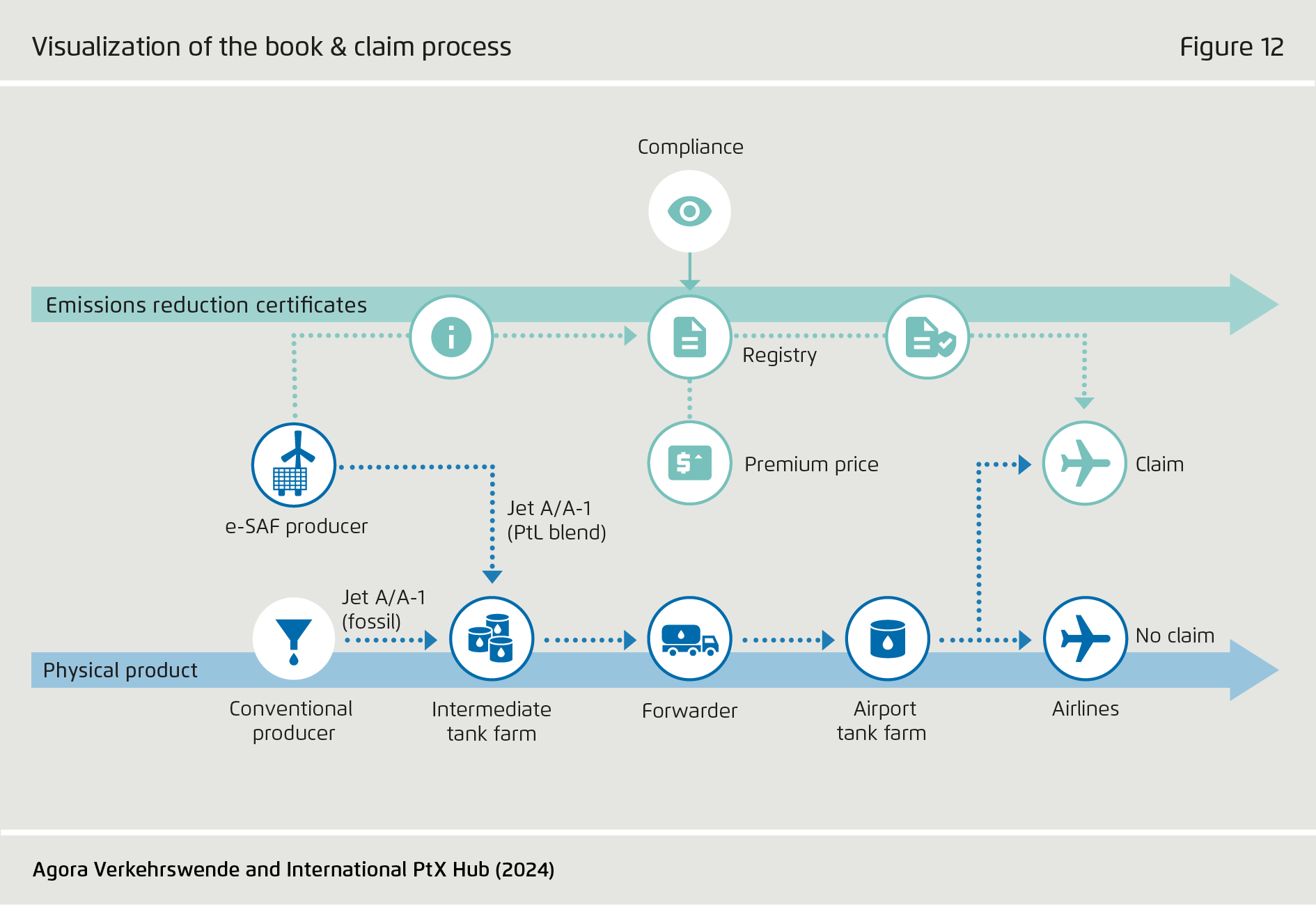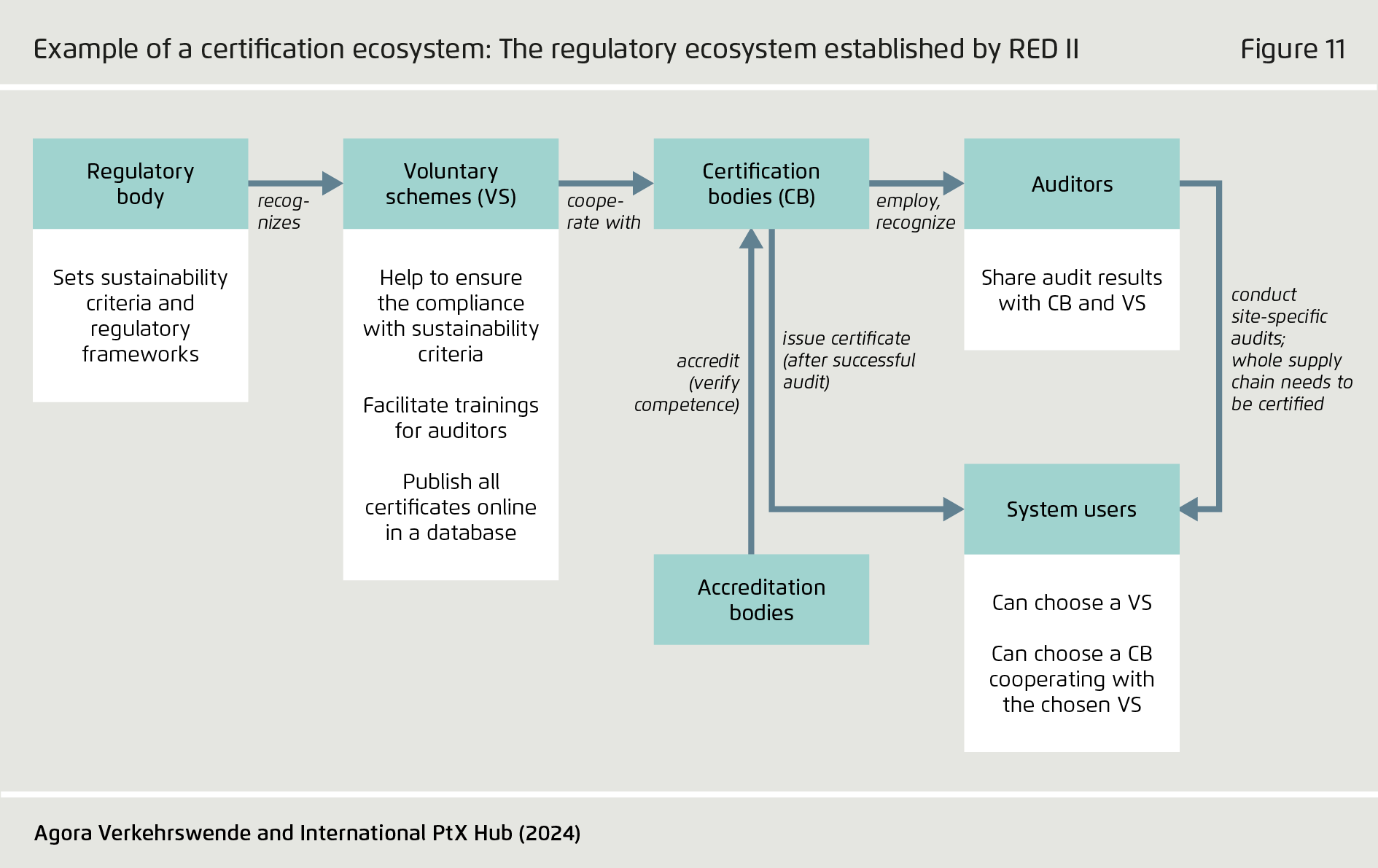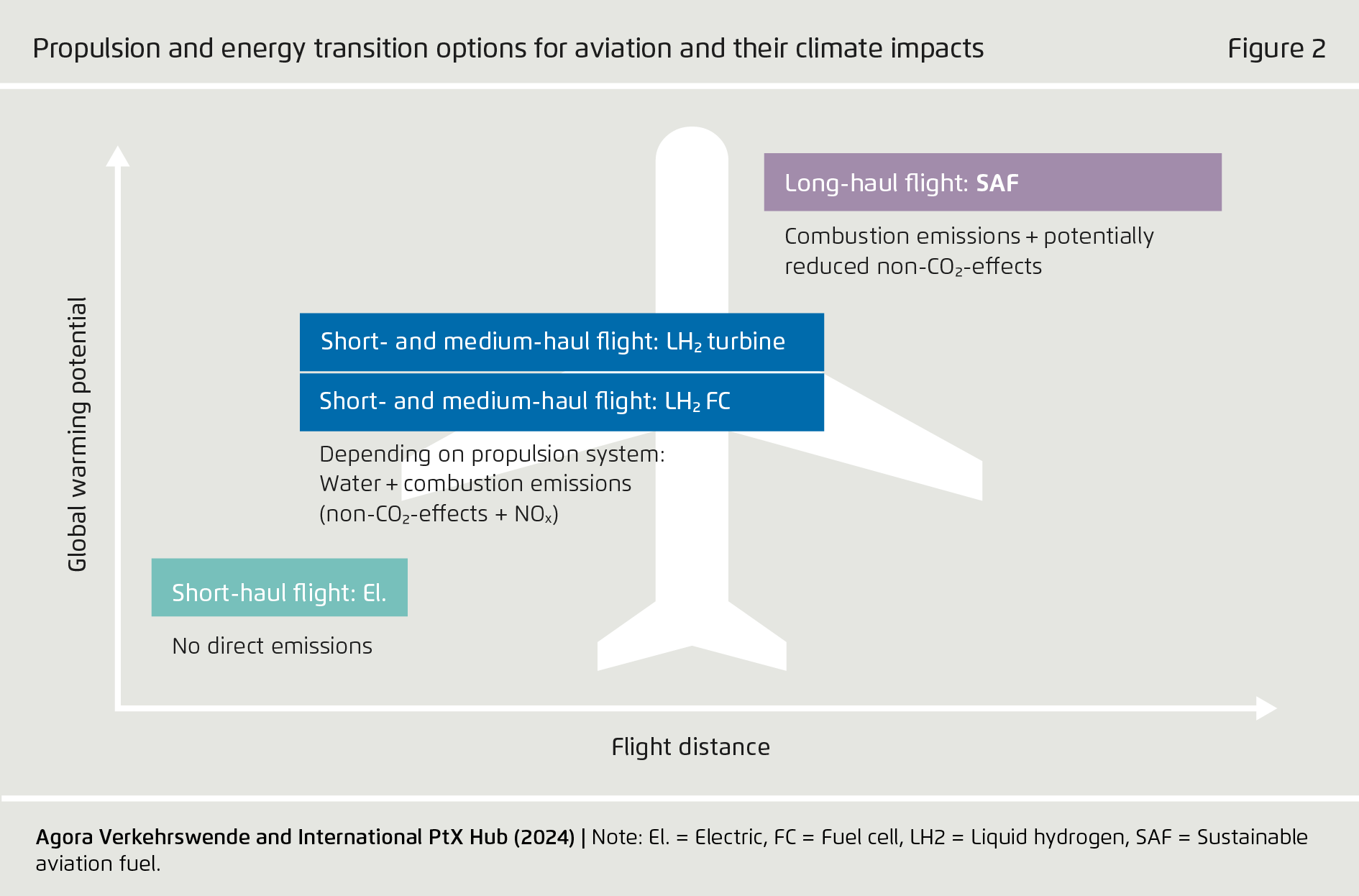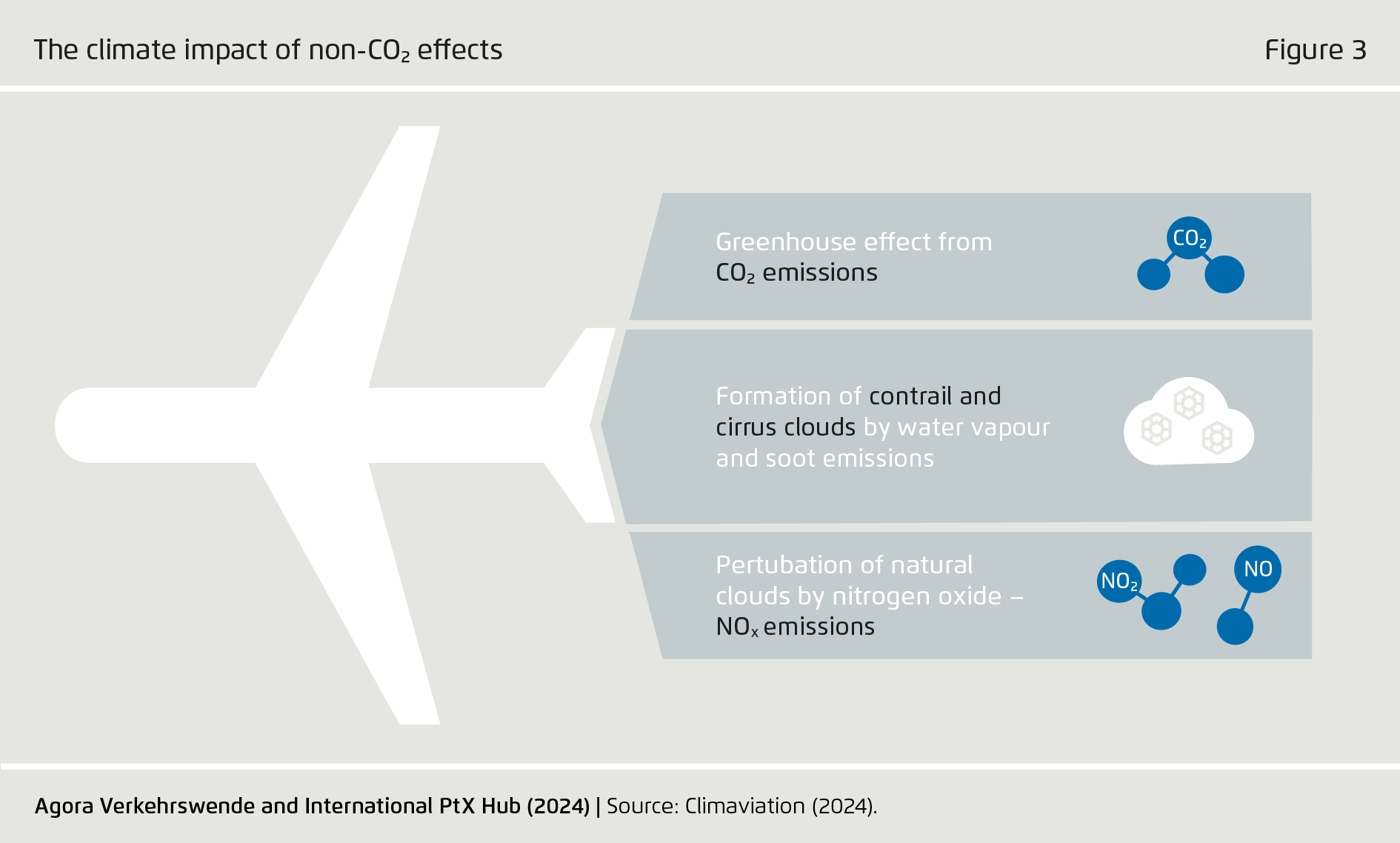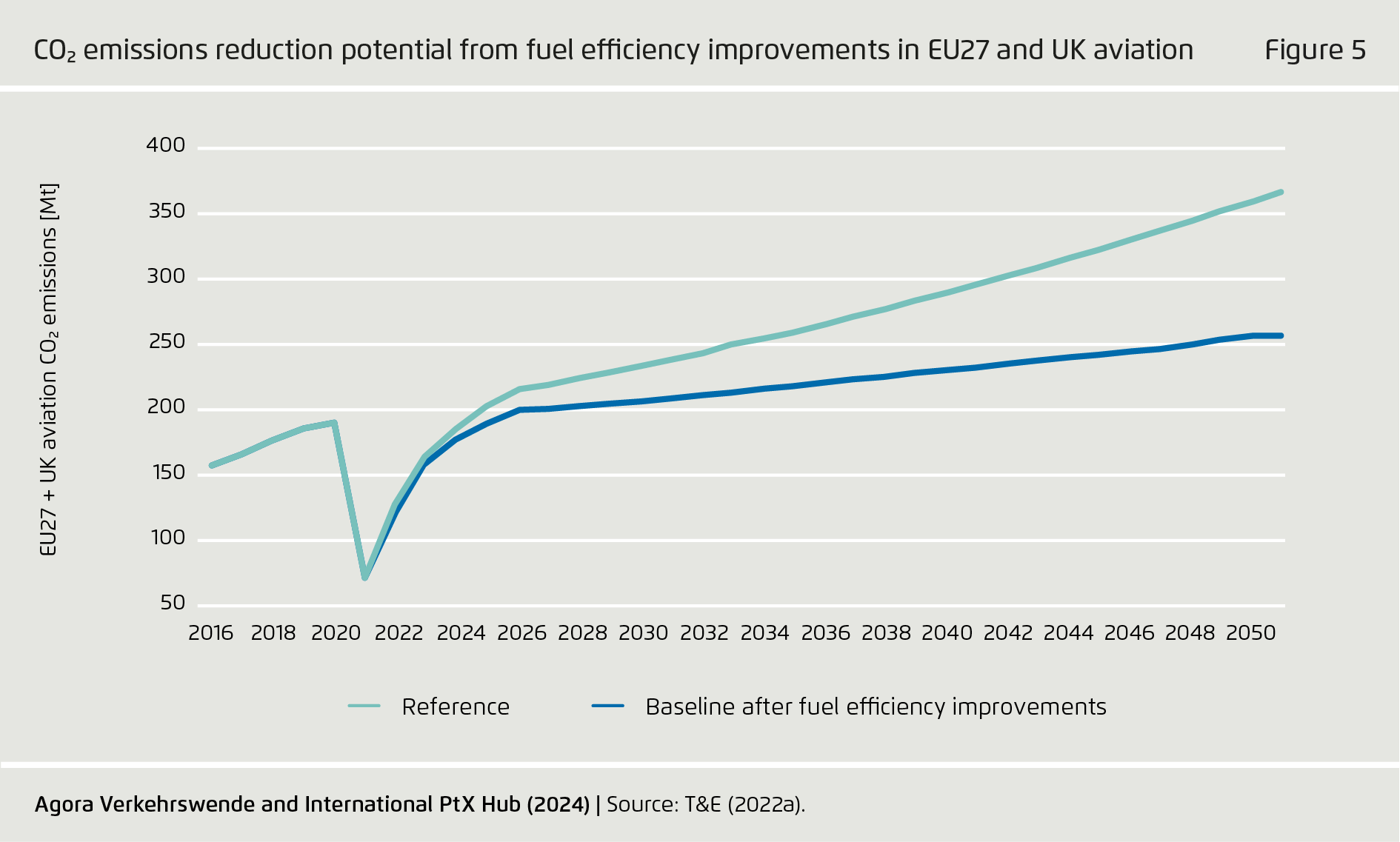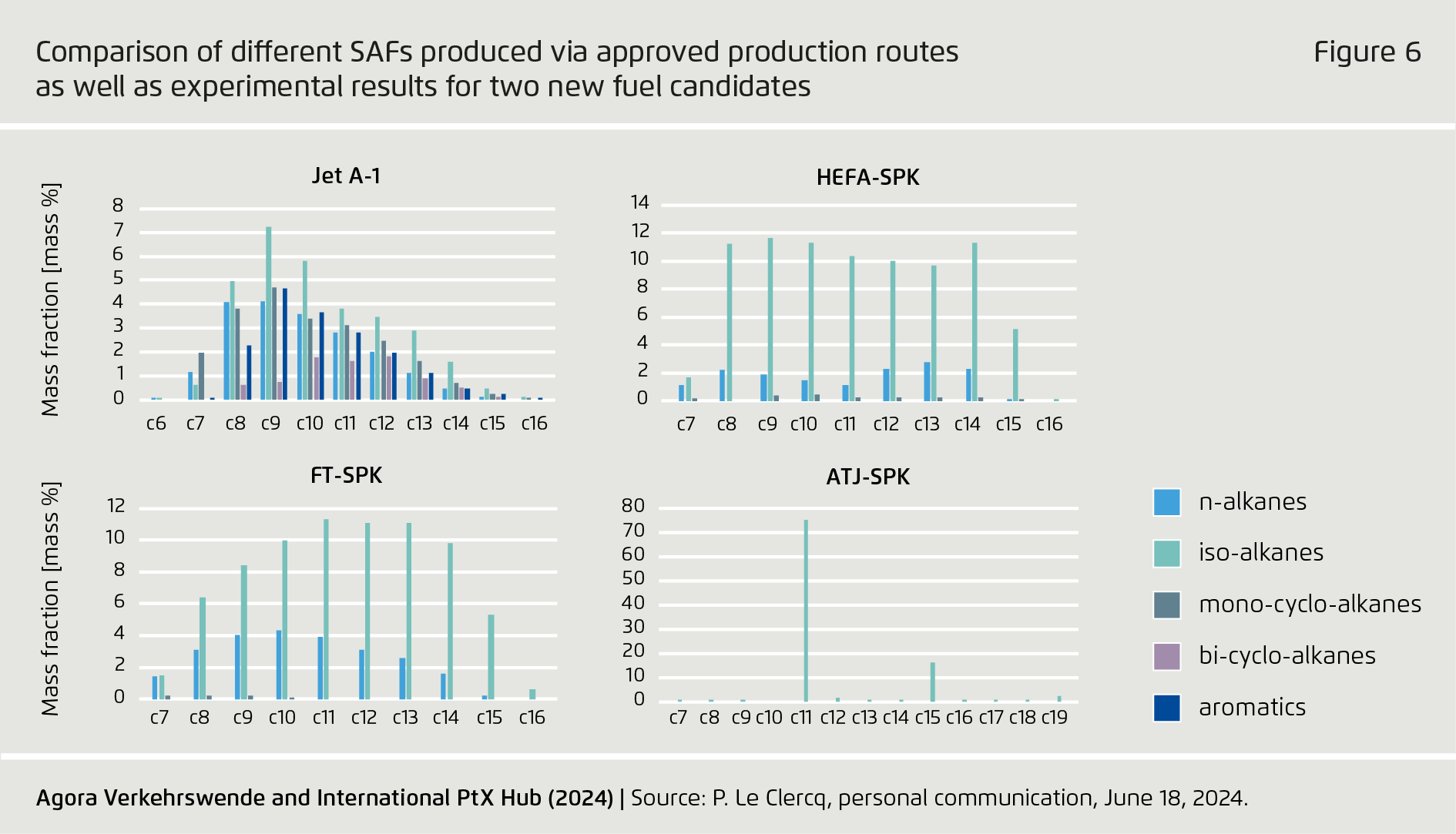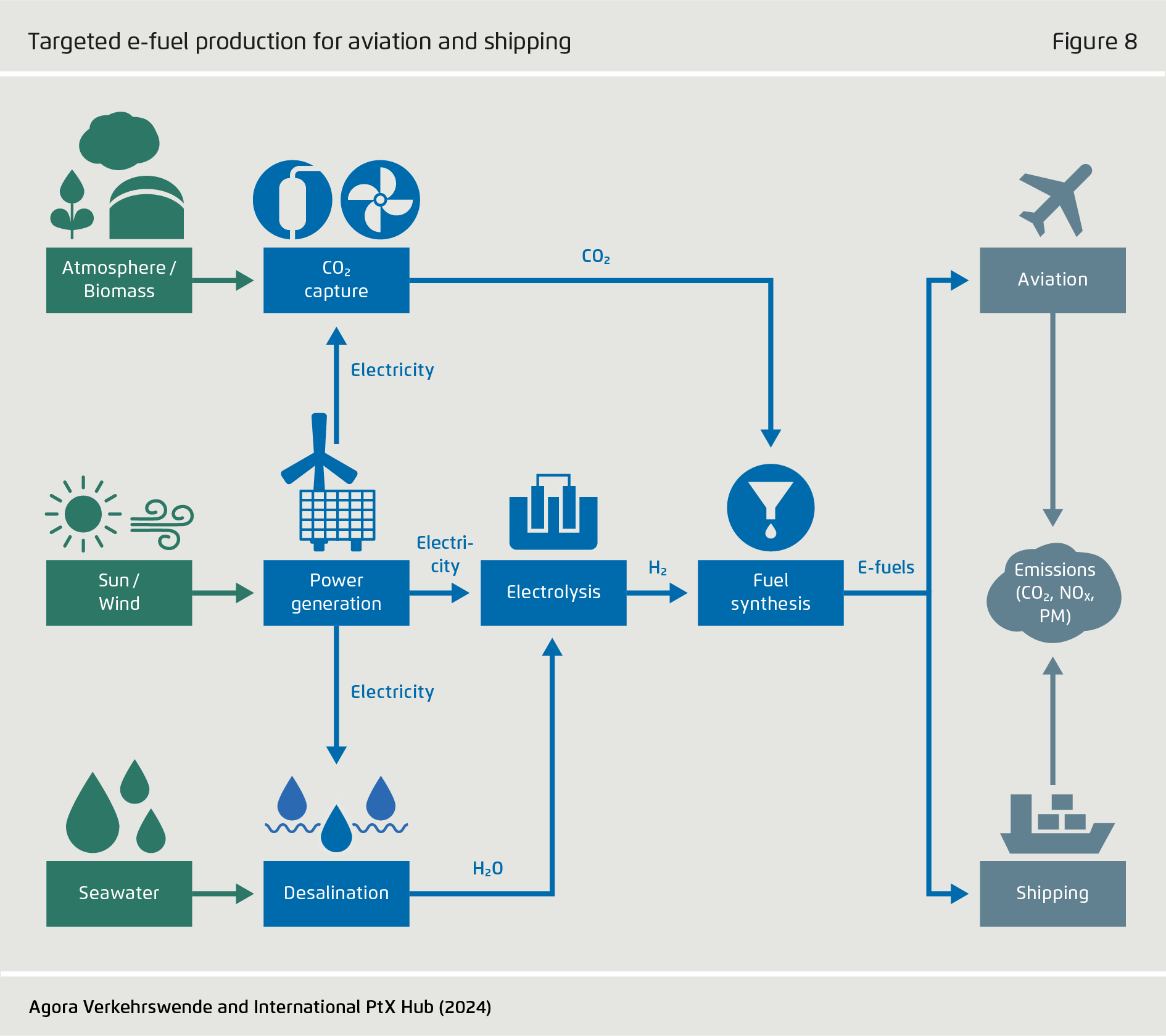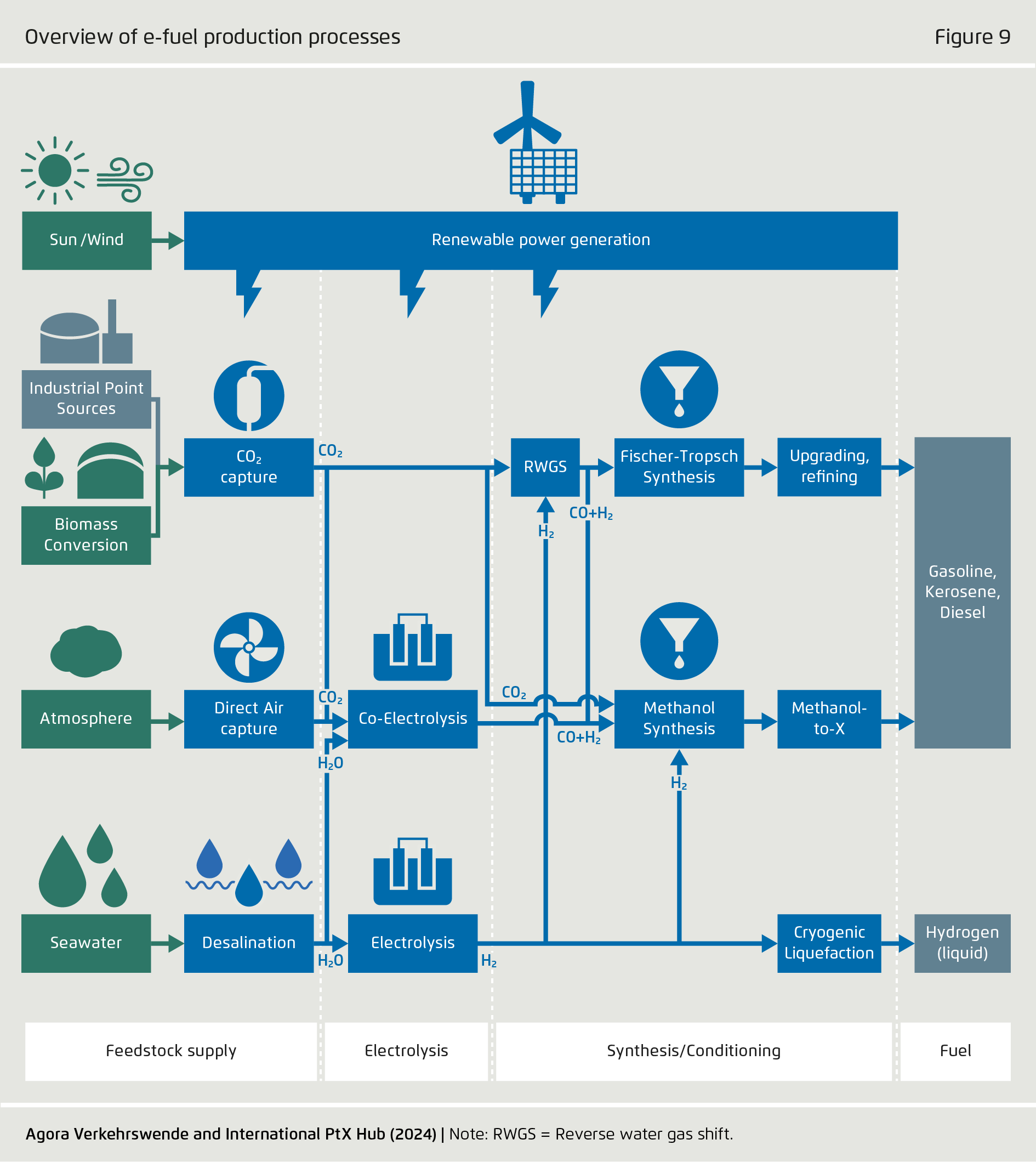-
The current system of fossil fuels is not a viable option for the future, and SAF will be indispensable for advancing climate protection in aviation.
The goal of transitioning the aviation sector to battery electric, hydrogen electric, and/or hydrogen combustion systems faces major technical challenges, necessitating a reliance on liquid hydrocarbons for many years to come, particularly when it comes to long haul flights or the decarbonization of existing aircraft. While progress in reducing aviation sector emissions can be achieved through technical innovations and operational improvements, remaining hydrocarbon fuel demand will have to be covered with e-SAF, which offers the advantage of nearly unlimited scalability. The major task in the coming years will be to advance learning curves and exploit economies of scale in order to realize the greatest possible reductions in e-SAF production costs.
-
Policymakers across the globe should facilitate a market ramp-up of e-SAF by adopting suitable political and regulatory frameworks.
Far from relying on individual measures, policymakers should strive to adopt comprehensive regulatory packages that target actors throughout the fuel supply chain. The coordinated introduction of such measures in numerous countries would help to reduce the risk of market fragmentation and carbon leakage. Accordingly, international cooperation on e-fuel investment and regulatory policy is essential.
-
The development of comprehensive sustainability criteria for e-SAF – and not just for hydrogen – is essential for their socially and environmentally sound production and use.
The following principles should apply to international cooperation, standards, and certification systems: (1) The supply of renewable electricity to the domestic economy and population should have priority over the production of e-fuels for export; (2) e-SAF projects should rely exclusively on additional renewable energy capacity that is developed as a supplement to domestic renewable needs; (3) such supplemental capacity should be developed in a manner that supports local infrastructure expansion and economic development; and (4) renewable electricity should be used as efficiently as possible in e-fuel production countries, with priority given to direct electric applications, such as electric vehicles.
-
Once the political frameworks for e-SAF are in place, it will fall to industry and investors to rapidly expand the supply of e-SAF.
Projected global e-SAF production in 2030 correspond to around 3% of the EU’s current jet fuel demand. Accordingly, for the meaningful decarbonization of aviation, it is necessary not only to realize currently announced projects but also significantly expand the number of projects (both large and small) in the development pipeline. In the area of carbon sourcing, additional R&D is needed to improve technological solutions (including in particular direct air capture, or DAC) and enable widespread adoption.
-
A sole focus on “sweet spot” regions that offer particularly beneficial conditions for e-SAF production is insufficient; rather, an overarching strategy that addresses all major dimensions of e-SAF production is needed.
An effective strategy for ramping up e-SAF production must ensure ample renewables generation, the sustainable sourcing of carbon, and viable models for project financing. Policymakers must also devote attention to steering the production and use of e-SAF in a manner that serves climate policy goals. The establishment of robust international standards will play an important role in this regard.
Defossilising aviation with e-SAF
An introduction to technologies, policies, and markets for sustainable aviation fuels

Preface
This paper provides an overview of the current state of research with a view to the defossilisation of the aviation sector using electricity-based sustainable aviation fuels (e-SAF). It is closely related to our discussion paper “E-fuels: Separating the substance from the hype”, in which we outlined how electricity-based synthetic fuels can contribute generally to the energy transition in transport. The key takeaways offered by both papers are similar. However, in this paper we focus strictly on aviation, discussing in detail the potential offered by e-SAF.
Our goal is to furnish an evidence-based foundation for policy debate while illuminating options for just and inclusive development. If policymakers wish to ramp up global e-SAF production and thus enable the defossilisation of aviation, then associated decisions must be made in the near term based on an internationally concerted strategy that is informed by clear priorities. To this end, it is crucial to distinguish between viable options and mere wishful thinking.
Key findings
Bibliographical data
Downloads
-
pdf 2 MB
Defossilising aviation with e-SAF
An introduction to technologies, policies, and markets for sustainable aviation fuels
All figures in this publication
Options for achieving the emission reduction goals of the international aviation industry
From Defossilising aviation with e-SAF on page 1

Di erences in e-fuel cost allocatio n between integrated and fully segregated merchant models
From Defossilising aviation with e-SAF on page 13
